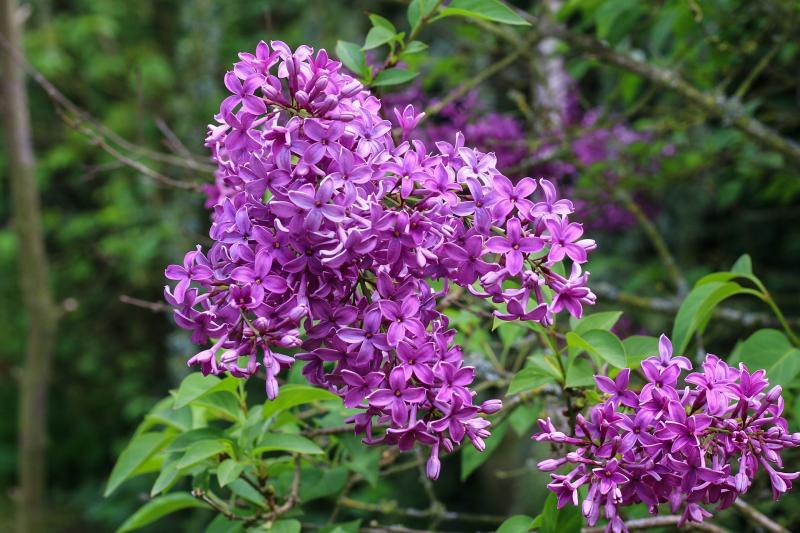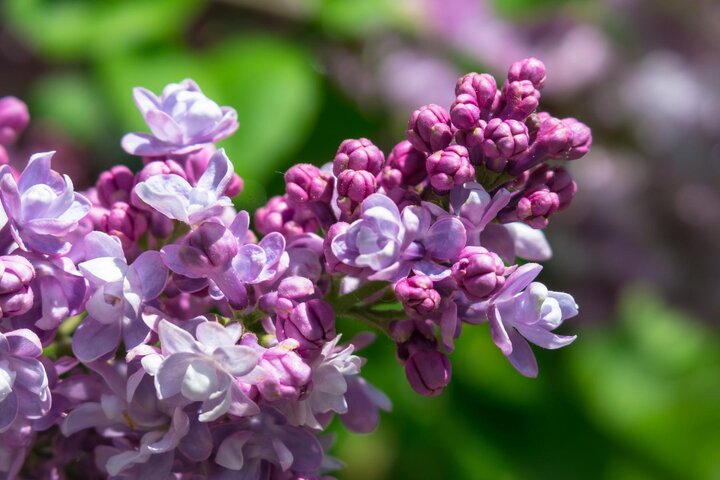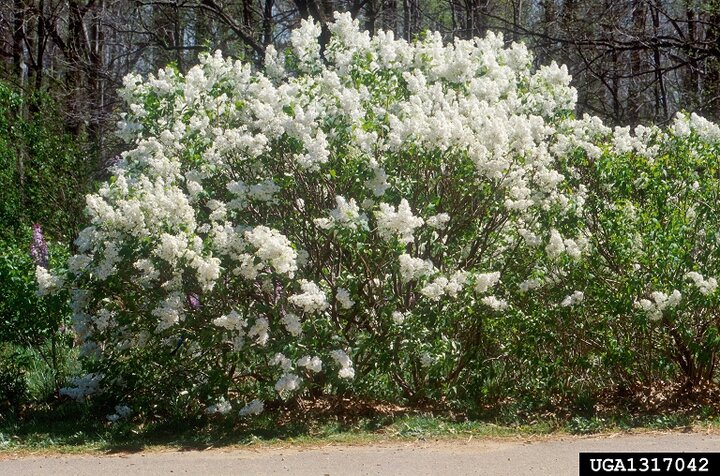Sarah Browning, Nebraska Extension Educator

Lilac - Image by Pixabay.com
Lilacs are one of the most recognized and best loved shrubs found in Nebraska landscapes. It’s also one example of a plant that performs wonderfully in northern gardens, hardiness zones 3-7 for most species, but lacks vigor and does not flower reliably in southern gardens (Zone 8 and higher).

Common species of lilacs include the following:
- Syringa meyer, Meyer Lilac(often called Dwarf Korean lilac) - a dense, neat lilac with a good uniform outline. Violet-purple flowers produced in May are softly fragrant. Literally covered in flowers when blooming. Height 4-7 feet, width 5-6 feet. ‘Palibin’ is a compact form that grows 4-5 feet high and 5-7 feet wide with reddish-purple flower buds that open to whitish-pink flowers.
- Syringa microphylla, Littleleaf Lilac- smaller leaves result in a finer textured shrub, when compared to S. vulgaris. A handsome, broad-spreading shrub grows 6 feet tall and 9-10 feet wide. Fragrant, rosy-lilac flowers. Works well in a shrub border, groups or as a hedge. ‘Superba’ had single, deep pink flowers and is quite floriferous.
- Syringa persica, Persian Lilac- a graceful shrub with upright, arching branches reaching 4-8 feet in height and 5-10 feet in width. Dark green foliage and pale lilac, fragrant flowers produced in May. A nice small lilac with a mass of flowers in season.
- Syringa reticulata, Japanese Tree Lilac - a large shrub or small tree form of lilac reaching a height of 15-20 feet, and width 15 feet. Stiff, spreading branches develop an oval to rounded crown. Creamy, white, fragrant flowers are produced in June. An excellent specimen tree and small enough to plant under utility lines. If allowed to develop into a tree, annual pruning is not necessary.
- Syringa villosa, Late Lilac - blooms in late May or early June, later than other lilacs. A bushy shrub of dense, rounded habit with stout, stiff upright branches. Many cultivars are available with flower colors including pink, dark purple-red, violet, rosy lilac and white. Not as fragrant as S. vulgaris. Height 6-7 feet, width 6-8 feet.
- Syringa vulgaris, Common Lilac - the most common form of lilac grown in Nebraska, forms an upright shrub with a height of 8-15 feet and width of 6-15 feet. Blooms in May with extremely fragrant flowers. Well over 400 cultivars are available including a wide range of colors and flower forms.
If you would like to add a lilac to your landscape this year, it’s worth the time to visit the lilac collection at the Yeutter Gardens on the University of Nebraska’s East Campus. There you can view over 50 cultivars and species of lilacs to consider, while strolling through the gardens with an ice cream cone from the nearby UNL Dairy Store. The best time for viewing most lilacs in bloom is from late April through mid-May.
For information on lilac pruning, visit Pruning Lilacs.

Images
- Pixabay.com
- Pixabay.com
- A well-pruned lilac shrub. Syringa vulgaris 'Betsy Ross', image from Margaret Pooler, Bugwood.org.
Search Our Archive
Associated Video
Lilac Management
Nebraska Extension Plant Diagnostician Kyle Broderick and UNL Director of Landscape Operations Jeff Culbertson discuss disease, environmental and pruning issues of lilac.